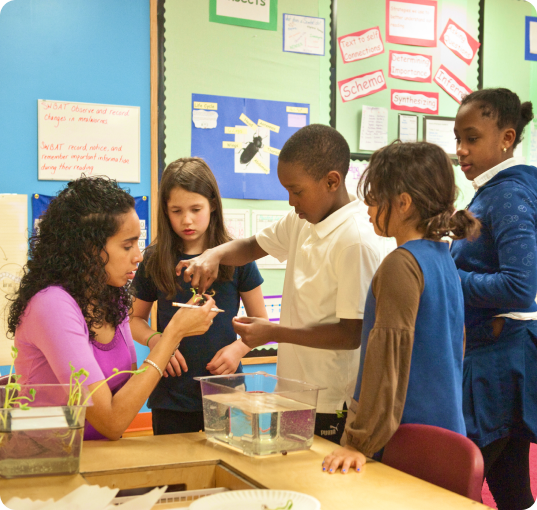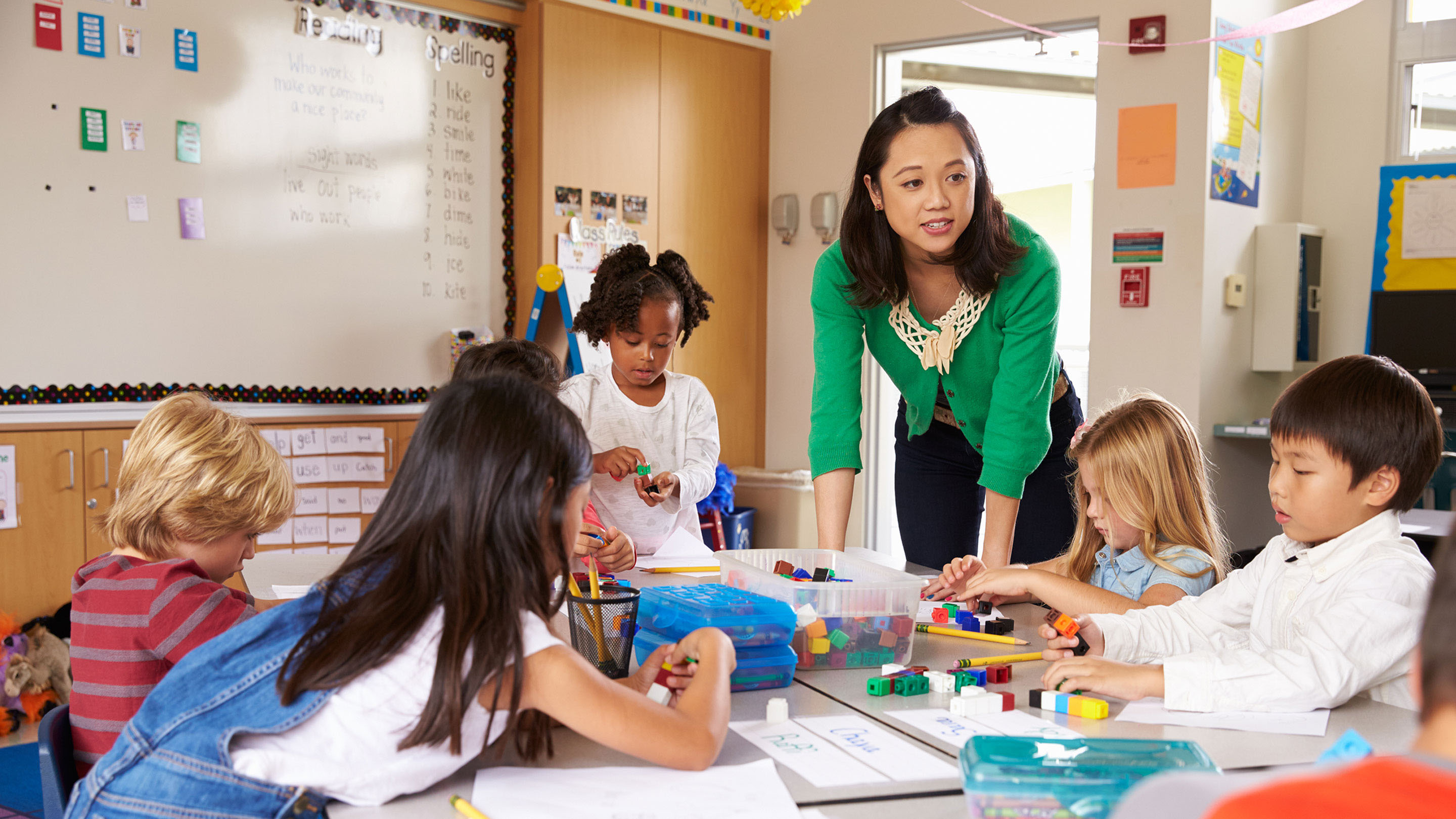Affordable Primary Science Tuition Singapore for All Learning Needs
Affordable Primary Science Tuition Singapore for All Learning Needs
Blog Article
A Comprehensive Guide to the Numerous Knowing Approaches in Key Scientific Research Instruction
The exploration of diverse understanding techniques in key science instruction offers an opportunity for instructors to improve student engagement and comprehension substantially. By taking a look at hands-on discovering strategies, inquiry-based strategies, and collective approaches, we can determine effective techniques that provide to different finding out designs. In addition, the integration of innovation and distinguished guideline plays a vital function in promoting an inclusive environment. Nonetheless, the question stays: just how can these techniques be properly executed in the classroom to maximize their impact? The solution lies in a closer examination of each strategy and its ramifications for teaching scientific research.

Hands-On Discovering Techniques
Hands-on understanding methods play a critical role in main scientific research instruction, involving pupils in active exploration and trial and error. These methods allow learners to connect straight with materials and phenomena, promoting a much deeper understanding of clinical ideas. By utilizing manipulatives, models, and real-life experiments, educators produce an atmosphere where students can observe, assume, and evaluate their ideas.
Such methods not just boost understanding however also cultivate crucial thinking and analytical skills. When pupils take part in tasks like developing simple devices, growing seeds, or conducting chain reactions, they are urged to ask inquiries and seek answers via their very own monitorings. This experiential technique aids to debunk intricate scientific principles, making them a lot more relatable and obtainable.
Furthermore, hands-on knowing advertises partnership amongst peers, as students typically operate in teams to carry out experiments or share findings. This teamwork not just enriches their knowing experience however additionally establishes important social abilities. Eventually, incorporating hands-on techniques in primary scientific research direction cultivates a long-lasting love of discovering and curiosity concerning the natural globe, laying a strong foundation for future scholastic quests in scientific research and beyond.
Inquiry-Based Learning
Inquiry-based discovering is an educational technique that encourages trainees to ask concerns, investigate sensations, and construct their very own understanding of scientific ideas. This technique moves the focus from typical teacher-led guideline to an extra student-centered experience, where learners take the campaign in their instructional trip. By fostering interest, inquiry-based discovering advertises much deeper engagement with the product, permitting pupils to discover topics in a significant context.
In practice, this technique typically involves hands-on experiments, monitorings, and important reasoning activities that align very closely with the scientific technique. Pupils are motivated to create theories, style examinations, and evaluate data, which cultivates important abilities such as analytical and problem-solving thinking. The role of the educator in this framework is to promote expedition, assisting pupils via the inquiry procedure while motivating independent thought and cooperation.
Furthermore, inquiry-based learning nurtures a feeling of ownership over the knowing process, inspiring trainees to pursue expertise actively. This technique not only enhances understanding of scientific ideas yet also promotes a long-lasting love for knowing, furnishing trainees with the abilities necessary to navigate a significantly complicated globe.
Collaborative Understanding Approaches
Collective discovering methods encourage pupils to participate in meaningful communications with peers, cultivating a shared responsibility for their instructional outcomes. In primary science guideline, these techniques urge students to collaborate to discover scientific principles, resolve troubles, and conduct experiments (primary science tuition Singapore). By taking part in team activities, pupils can leverage varied point of views, allowing for richer understanding and retention of scientific understanding
One secret aspect of collaborative understanding is the emphasis on interaction skills. Trainees must articulate their thoughts, listen actively to others, and negotiate concepts, every one of which are important proficiencies in both scholastic and real-world contexts. This social interaction not only improves their understanding of clinical principles but also advertises teamwork and dispute resolution skills.
When students see the value of their payments within a team, they are a lot more likely to take ownership of their knowing journey. On the whole, including collaborative knowing techniques in main scientific research instruction grows a dynamic learning setting that prepares trainees for future academic and social obstacles.
Innovation Assimilation in Science
The integration of innovation in main science direction boosts learning experiences by offering innovative devices and resources that support different training approaches, including joint discovering - primary science tuition Singapore. Using digital platforms, simulations, and interactive applications permits pupils click to investigate to engage deeply with scientific ideas, assisting in a much more hands-on strategy to knowing
Virtual laboratories, for example, allow students to conduct experiments securely and effectively, promoting inquiry-based knowing. These tools can imitate real-world clinical scenarios, permitting trainees to envision complex procedures that would be hard to replicate in a typical classroom setup. Technology promotes interaction and collaboration amongst trainees, as they can share searchings for and work together on tasks with on-line platforms.
Furthermore, multimedia presentations and instructional videos can enrich lessons by dealing with varied knowing designs, making abstract concepts a lot more obtainable. Data analysis devices additionally equip pupils to collect and analyze scientific data, reinforcing vital thinking skills. Generally, the strategic unification of innovation in key scientific research instruction not only improves interaction but additionally prepares trainees for a technically advanced culture, furnishing them with crucial abilities for future scientific endeavors.
Differentiated Direction Methods
Separated instruction methods are vital for addressing the varied requirements of learners in main scientific research education. These approaches allow teachers to customize their training approaches to accommodate differing capacities, interests, and finding out styles within the class. By utilizing distinguished instruction, teachers can produce an inclusive environment that promotes interaction and boosts understanding of clinical concepts.
One efficient strategy is to make use of adaptable grouping, which allows pupils to team up with peers at similar ability degrees or with varying point of views. This method motivates peer knowing and promotes essential thinking. Furthermore, offering selections in tasks can encourage trainees, enabling them to pick jobs that resonate with their passions while still meeting curricular objectives.
Furthermore, integrating tiered jobs is one more useful method. Deliberately jobs with differing levels of complexity, instructors can make sure that all pupils are appropriately tested, no matter their efficiency. Using formative evaluations to evaluate understanding further enables educators to change their training methods dynamically, ensuring that each student obtains the assistance they require.
Ultimately, carrying out separated instruction techniques in main scientific research education not only boosts trainee learning outcomes however likewise cultivates an interest for science, preparing trainees for future academic quests.

Final Thought
In summary, efficient main science direction necessitates a diverse approach that encompasses hands-on knowing, inquiry-based techniques, and joint methods. The integration of technology and distinguished direction further provides to varied go to my blog learning styles, fostering a setting conducive to expedition and critical thinking.
The expedition of diverse discovering techniques in key science guideline provides a possibility for educators to enhance student engagement and comprehension considerably.Hands-on understanding strategies play a critical role in key scientific research direction, engaging students in active exploration and trial and error.Inquiry-based knowing is an educational technique that motivates trainees visit here to ask questions, examine sensations, and build their very own understanding of clinical ideas.Joint understanding techniques equip students to involve in purposeful communications with peers, fostering a shared obligation for their academic results. Generally, integrating joint learning strategies in primary science direction grows a vibrant knowing setting that prepares students for future academic and social obstacles.
Report this page